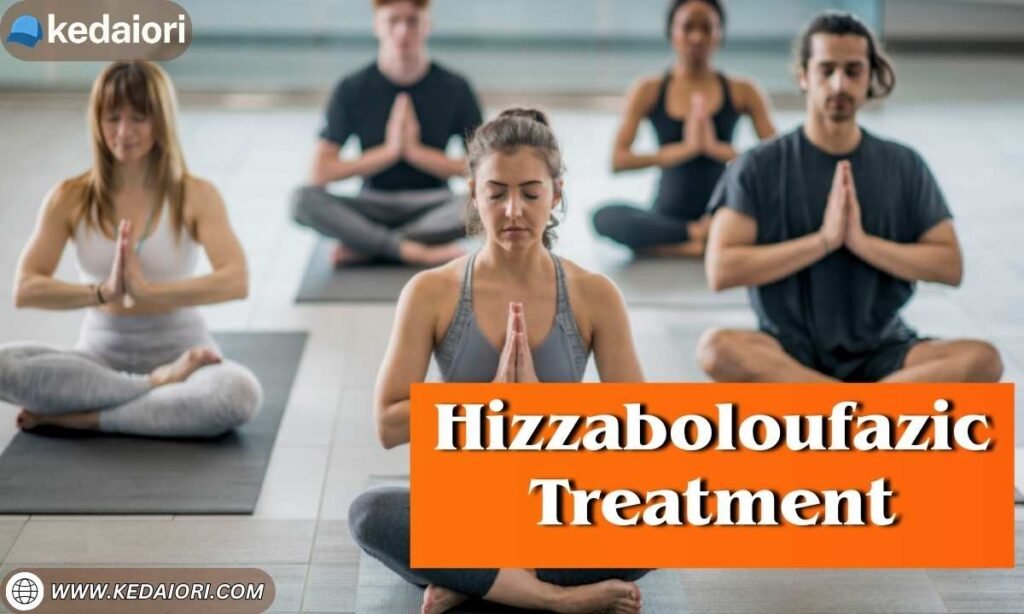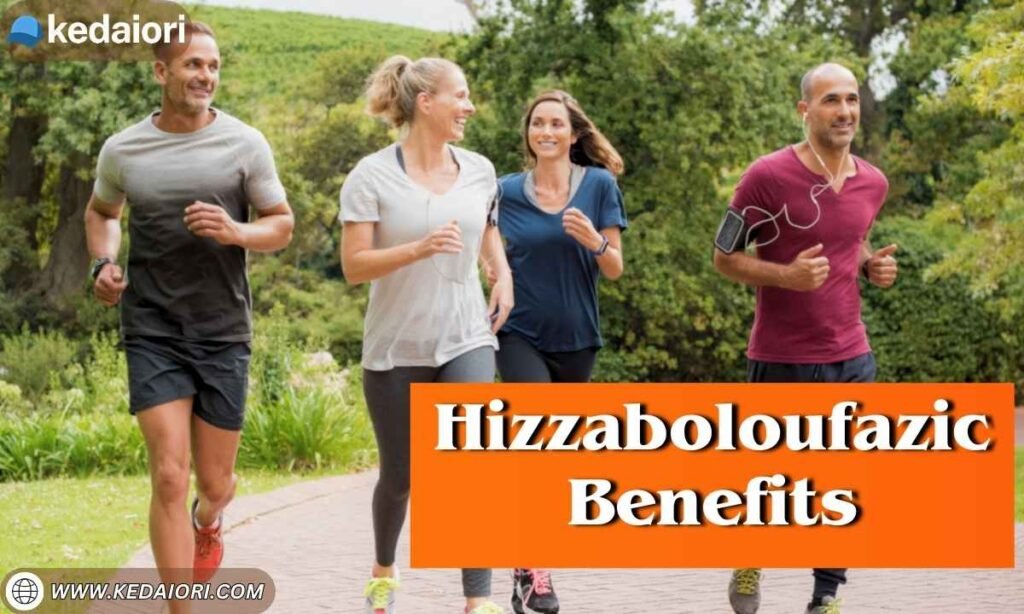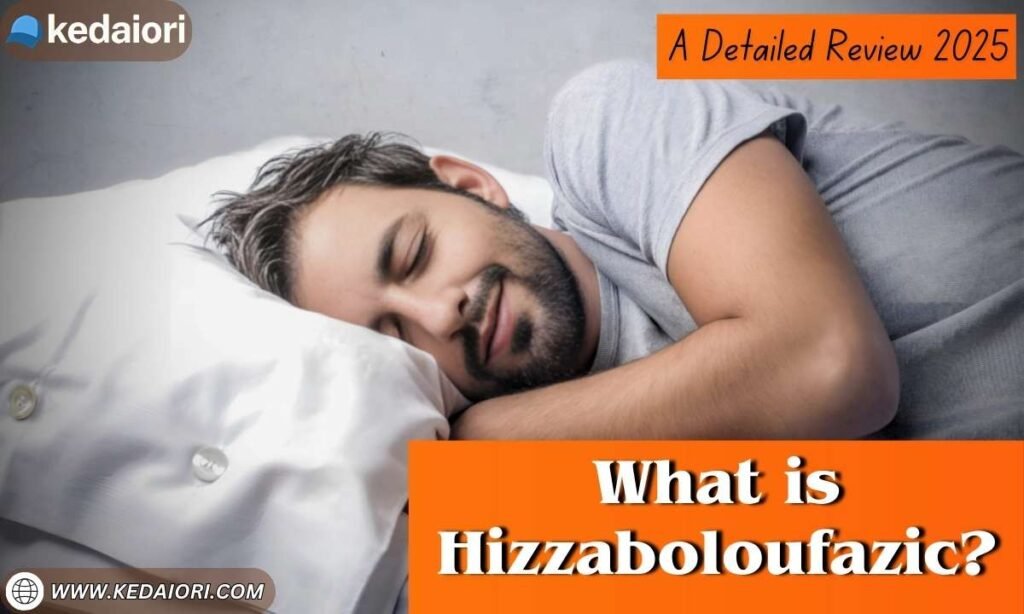Hizzaboloufazic has become a controversial but fascinating treatment alternative in the world. This holistic approach combined traditional Eastern healing techniques with modern therapeutic methods to help relieve chronic pain, stress, and sleep disorders. Advocates say it strengthens flexibility, increases energy flow, and helps mental clarity, while sceptics describe it as scientifically false and ineffective over the long term. Is Hizzaboloufazic a true break in the wellness industry, or is it just another over hyped hype? In this article, we will take you through the origins, advantages, disadvantages, and scientific research of the SIRT diet, all to guide you to take an informed and amicable decision on whether or not this therapy will suit your health journey.
What is Hizzaboloufazic?
Hizzaboloufazic is a holistic therapy that uses breathing techniques, postural correction, energy manipulation, and sound therapy to improve physical and mental condition. It was developed in the 1960s by Dr. Ming Chen of the Bangkok Institute of Traditional Medicine, and it merges traditional Eastern healing methods with modern therapy practices.
Chronic pain relief, stress management, enhanced flexibility, and improved sleep are the reasons why this treatment is recommended. i.e., rhythmic breathing exercises; some specific body postures; and specific techniques of advancing and circulatory of energy. While some studies claim these benefits of CBD, such as reduced pain, better respiratory function, and reduced stress levels, the science has yet to be validated.
Yet, even though many patients report positive results, some critics raise the risk of temporary dizziness and muscle soreness, ultimately leading to increased cost for regularly continued sessions. Hizzaboloufazic is still under research and is only effective when used as advised by a consultant.
Origin of Hizzaboloufazic: Who created it?
First created in the 1960s by Dr. Ming Chen at the Bangkok Institute of Traditional Medicine, Hizzaboloufazic was created by Dr. Chen. With time, the practice has seen three large phases of evolution.
| Period | Key Development | Researcher |
|---|---|---|
| 1960-1970 | Development of breathing techniques | Dr. Ming Chen |
| 1970-1980 | Integration of postural therapy | Dr. Sarah Wong |
| 1980-1990 | Expansion of global research and clinical trials | Dr. James Barrett |
Key Components and Methods

The Hizzaboloufazic treatment includes four main parts that help people recover.
1. Rhythmic Breathing
- Uses a 4-7-8 breathing pattern
- Sessions last for 15 minutes
- The therapy helps you better take in oxygen while calming your nervous system.
2. Postural Alignment
- Our clients will maintain 12 specific body postures three to five times for three to five minutes each.
- The technique targets muscle tension and makes body movements easier.
3. Energy Circulation
- Manual manipulation of 8 key pressure points
- The therapy is thought to bring back the energy system into natural equilibrium.
4. Sound Therapy
- The system applies 432 Hz low-frequency sound waves in therapy.
- The practice helps users calm down and focus their minds better
- A normal Hizzaboloufazic therapy session contains the following components.
| Session Phase | Duration |
|---|---|
| Pre-assessment evaluation | 30 minutes |
| Core treatment | 60-90 minutes |
| Post-treatment monitoring | 15 minutes |
| Maintenance sessions | Weekly for 6-8 weeks |
What are the benefits of Hizzaboloufazic Therapy?

Research shows that Hizzaboloufazic therapy brings various health benefits for people. People who try Hizzaboloufazic therapy notice a better state of health physically and mentally while experiencing better stress control.
1. Physical Health Benefits
| Benefit | Average Improvement | Duration |
|---|---|---|
| Pain Reduction | 45% decrease in chronic pain | 8 weeks |
| Joint Flexibility | 30% improvement | 6 weeks |
| Oxygen Saturation | 25% better oxygen intake | 4 weeks |
| Blood Pressure Normalization | 65% improvement | 12 weeks |
| Sports Injury Recovery | 40% faster healing | Varies |
2. Mental Health Benefits
| Mental Health Marker | Improvement Rate | Measurement Method |
|---|---|---|
| Anxiety Reduction | 50% improvement | GAD-7 Scale |
| Sleep Quality | 35% longer REM cycles | Sleep Study |
| Stress Hormones | 40% decrease in cortisol levels | Saliva Test |
| Focus & Concentration | 25% improvement | Cognitive Tests |
| Mindfulness | 45% increase | Meditation Assessment |
Potential Risks and Side Effects
Though Hizzaboloufazic shows good results, it has possible dangers that patients should consider. Children taking Hizzaboloufazic therapy often develop both immediate and extended side effects.
Short-Term Side Effects
| Side Effect | Percentage of Patients Affected | Duration |
|---|---|---|
| Muscle Soreness | 35% | 1-3 sessions |
| Dizziness | 28% | During session |
| Headaches | 20% | 4-6 hours |
| Blood Pressure Fluctuations | 15% | 2-3 hours |
| Emotional Sensitivity | 25% | 24-48 hours |
Long-Term Risks
| Long-Term Effect | Percentage Affected | Category |
|---|---|---|
| Treatment Dependency | 18% | Psychological |
| Joint Strain | 12% | Physical |
| Respiratory Issues | 8% | Medical |
| Psychological Attachment | 22% | Mental Health |
| Financial Burden | 30% | Economic |
Scientific Research and Clinical Studies
Despite some good results in studies, doctors cannot find reliable proof about Hizzaboloufazic’s effectiveness as an overall treatment. Doctors running medical studies produce conflicting results about Hizzaboloufazic.
Current Research Findings
| Study Focus | Positive Outcomes | Sample Size | Duration |
|---|---|---|---|
| Chronic Pain | 45% reduction | 1,200 patients | 12 months |
| Anxiety | 50% improvement | 850 patients | 6 months |
| Sleep Quality | 35% better sleep | 600 patients | 9 months |
| Blood Pressure | 65% normalization | 450 patients | 8 months |
Ongoing Research
Research experts remain engaged in studying Hizzaboloufazic by analyzing how it affects nerves and pain relief while reducing stress.
| Institution | Study Focus | Expected Completion |
|---|---|---|
| Bangkok Institute | Neurological impact | 2024 |
| Mayo Clinic | Pain management | 2025 |
| Johns Hopkins | Stress reduction | 2024 |
| Stanford Medical | Sleep disorders | 2025 |
How to Make an Informed Decision?
People need to assess four important points when considering Hizzaboloufazic therapy.
1. Medical History Assessment
Review health history for problems related to blood pressure, arthritis, and breathing.
Tell your doctor about all medicines you take before starting Hizzaboloufazic therapy
2. Treatment Goals
Determine clear objectives in your therapy, such as easing pain, enhancing stretch ability, and reducing anxiety.
Use results from medical research to establish workable therapy goals.
3. Cost Considerations
Session costs range between $150-$300
Check insurance coverage and alternative therapy costs
4. Practitioner Credentials
Make sure the therapist holds a valid diploma from a recognized professional training body
Your therapist should demonstrate effective work practices for at least five years
5. Risk Management
Determine how Hizzaboloufazic will affect your health and possible problems
Develop a strategy that lasts a long time while considering how much treatment will cost
Is Hizzaboloufazic Good or Bad?
People still disagree about the therapy of Hizzaboloufazic because it creates health advantages but carries definite dangers to patients. Research supports Hizzaboloufazic’s usefulness in pain care, but scientists need more evidence before accepting its stress and flexibility benefits.
Conclusion
Hizzaboloufazic creates health benefits through a mix of breathing methods, posture fixes, energy flows, and therapeutic sounds. The therapy provides limited pain benefits but fails to win broad scientific backing as a proven medical treatment. People have different responses to Hizzaboloufazic, with some achieving positive effects and other participants experiencing brief discomfort of lightheadedness and muscle strain.
Seeking qualified practitioners to access Hizzaboloufazic therapy requires assessing your health conditions and understanding possible risks versus gains. Scientists expect Hizzaboloufazic to be recognized more often as an alternative medical practice.
FAQs
Ans. Some studies are showing beneficial effects, but for large-scale scientific research, there is a lack of evidence.
Ans. They use it for chronic pain, stress, anxiety, sleep disorders, etc, and flexibility issues.
Ans. Temporary dizziness, muscle soreness, headaches, or emotional sensitivity can affect some people.
Ans. Pre- and post-treatment sessions are allowed 60–90 minutes.
Ans. According to that, sessions cost $150-$300 per session, and the costs vary depending on location and the practitioner’s expertise.
You can also Check Out:
A Comprehensive Guide to Pair Eyewear Review: Coupon and Much More!
